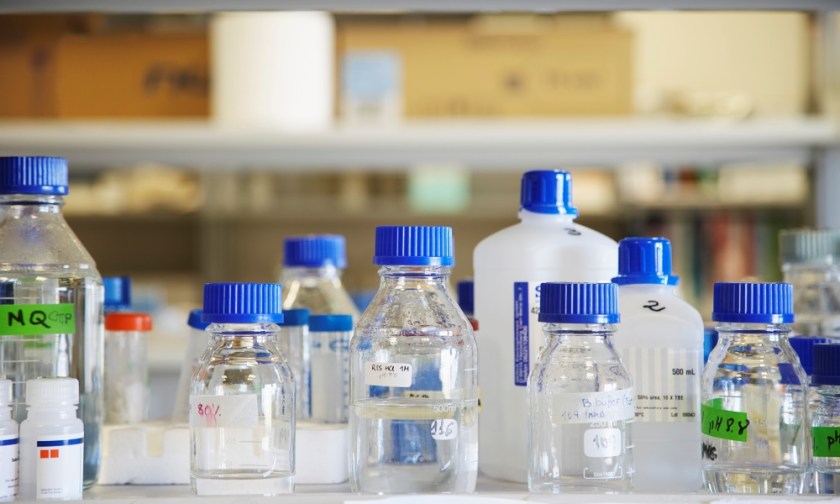When asked to give a talk on the Medi Stage at the recent Sydney International Spa & Beauty Expo about ‘Ingredients’ I was frankly flummoxed. I mean, how long is a piece of string?
 Over the past decade the skin and hair care market has exploded in line with advances in research and technology – and with that, the number of ‘wonder’ ingredients touted to address everything from signs of ageing to raging acne, and turning heads of straw into silk.
Over the past decade the skin and hair care market has exploded in line with advances in research and technology – and with that, the number of ‘wonder’ ingredients touted to address everything from signs of ageing to raging acne, and turning heads of straw into silk.
A 20-minute talk on ingredients taking this tack would have needed the best part of two days to properly explain the what, why and how. But as I got deeper into the research it occurred to me that it’s the ingredients people don’t want in their products and treatments is an increasingly important issue to be across.
Having ‘no nasties’ tops the list – and therefore has become a key marketing claim about products – along with a move to natural, organic, certified organic and vegan ranges, also cruelty free and eco-friendly.
Consumers are ever more discerning about what they are putting on their skin (that nclides the scalp) and, therefore, into their bodies. These are te clients who will expect salons, spas and clinics to know what’s what.
But exactly why are ‘nasties’ nasty in many people’s perception? What makes a product ‘natural’? What is the difference between ‘organic’ and ‘certified organic’. What is a ‘vegan’ skincare or cosmetic product? When it comes to the ‘goodies’ in skincare, such as antioxidants and peptides, why are they so good and what do they actually do?
And there I had my talk because I realised I wasn’t confident about the answers.
As a beauty and/or skin therapist or hairdresser this is a great opportunity to build business by really understanding the differences in the types of skin and hair care formulas and their ingredients.
Consumers are bombarded daily by advertising and marketing, often spearheaded by stunning celebrities, re what is the ‘best and leading skincare/haircare’.
Myriad beauty bloggers, by virtue of the coverage they can give brands, extol the benefits of products and treatments they often receive for free.
Go into any department store or pharmacy and there is a cornucopia of skin and hair care candy, and staff whose livelihoods depend on making sales.
So how is the average consumer to know the difference between skin care that feels good and skin care that delivers physiological changes to the skin? Moreover satisfies their check list of what is ‘good’ or ‘nasty’ in their particular mindset; wat is natural, organic or vegan. What doesn’t cause harm to animals or the environment.
The truth is they probably can’t. The result is a lot of people turning up on your doorstep deeply confused at best; at worst manifesting terrible skin or hair problems that have quite likely been caused by using the wrong products, the wrong mix of products or too many products. And have likely wasted a fortune in the process, just to add insult to injury.
Armed with product knowledge and expertise in prescribing and using them appropriately for each client’s needs will convert them into your loyal followers. You will be seen as the go-to person for their treatments and to buy products and will likely refer others.
WHAT ARE SO-CALLED ‘NASTIES’ AND WHY ARE THEY PERCEIVED THAT WAY?
Parabens are widely used as preservatives by cosmetic and pharmaceutical industries as they are effective preservatives in many types of formulas. These compounds, and their salts, are used primarily for their bactericidal and fungicidal properties.
They can be found in shampoos, commercial moisturisers, shaving gels, personal lubricants, topical pharmaceuticals, spray tanning solutions, makeup and toothpaste.They are also used as food additives.
Their efficacy as preservatives, in combination with their low cost, the long history of their use probably explains why parabens are so commonplace. They are becoming increasingly controversial because they are suspected ‘endocrine disrupters’, which means they can interfere with our hormones.
Parabens have been found in breast cancer tumors and have also displayed the ability to slightly mimic oestrogen (a hormone known to play a role in the development of breast cancer).
No effective direct links between parabens and cancer have been established, however another concern is that the estrogen-mimicking aspect of parabens may be a factor in the increasing prevalence of early puberty in girls.
Sulphates come in many different guises: sodium lauryl sulfate, sodium laureth sulfate, ammonium lauryl sulfate, ammonium laureth sulfate, and sodium C14-16 olefin sulfate, surfacants or surface active ingredients. They’re used in many shampoos and face washes because they’re excellent at cleaning things, notably by creating a foaming action that many people equate with . However, they can sstrip hair and skin of natural oils, leaving them dry and damaged. In susceptible people they can also cause irritations or allergies.
Synthetic fragrances. Beauty products using the word ‘fragrance’ could mean the use of chemicals including phthalates (another potential hormone disruptor).
Petroleum/Petrolatum is the byproduct from the production of petrol can be found in our most common lip products, and is used as a moisture barrier agent. Yet many people find it acually has the reverse effect and dries out the skin, as well as causing irritations and allergies.
Mineral oil is a petroleum derivative that coats the skin like plastic cling wrap. Destractors says this prevents the skin from breathing, absorbing and excreting as well as slowing the skin’s natural cell development, causing the skin to age prematurely. Baby oil is 100 percent mineral oil.
FD&C colour pigments. Most of these are made from coal tar and studies have shown them to be potentially carcinogenic. They can cause skin sensitivity and irritation, or even oxygen depletion in the blood. FD&C Red #4 is no longer available for use in foods because of a known threat to the adrenal glands and urinary bladder.
Propylene glycol is the active ingredient in antifreeze. It is also used in makeup, toothpaste and deodorant.
DEA (Diethanolamine), MEA (Monoethanolamine), TEA (Triethanolamine). These chemicals are also claimed by detractors to be hormone-disrupters and can form cancer-causing agents. They are commonly found in shampoos, soaps, bubble baths and facial cleansers.
Silicone is a chemically derived product with occlusive qualities. What this means in terms of skincare is that covers the skin to protect and keep the moisture in.
By doing so, silicone also fills in uneven skin texture like fine lines and acne scars so it gives the illusion of great skin when foundation is applied over it. This is why most makeup primers will contain silicones.
To identify silicone in a product, look for dimethicone or methicone in the ingredient list. In fact, the general rule of thumb is that anything ending in ‘cone’ is likely to be silicone. Opinions however are divided as to whether silicone is good or bad for the skin.
Proponents of the use of silicone say it is not bad because the molecules in dimethicone are too large to penetrate into the skin layers and only sit on top. This prevents moisture from escaping, helping keep the skin hydrated.
Long-wearing or waterproof makeup often contain silicones because they repel water and sweat.
Silicone detractors say that by creating an occlusive layer on the skin it also keeps in any sebum, dirt and bacteria and so cause breakouts. Further, that, prolonged use of silicones may lead to allergic reactions and sensitivities and that large doses of silicone can be toxic.
In hair products, silicone is commonly found in serums and conditioners. It coats the hair so it feels and looks soft, smooth and shiny. It also provides great ‘slip’ for detangling and combat frizz.
However, because most silicones are not water-soluble they cause build-up that weigh hair down and ironically can make it more brittle.
These non-water soluble silicones are what are referred to as ‘bad silicones.’ These are: trimethylsilylamodimethicone, amodimethicone, cyclopentasiloxane, cyclomethicone, dimethicone, cetyl dimethicone, cetearyl methicone, dimethiconol and stearyl dimethicone.
Water soluble silicones that will not cause build-up: stearoxy dimethicone and behenoxy dimethicone.
NATURAL v ORGANIC v CERTIFIED ORGANIC v VEGAN
Natural: This is a bit of a grey area as there are no regulations around the use of the word ‘natural’ in the Australian beauty market. However, truly natural beauty products should feature at least 90 percent of naturally-derived ingredients and be free from all synthetics.
The Natural Products Association was founded in the US in1936 and they represent over 10,000 retailers, manufacturers, wholesalers and distributors of natural products, including those in the cosmetics industry.
In order to gain their seal of approval, a personal care product must: ‘be made up of only, or at least almost only, natural ingredients manufactured with appropriate processes to maintain ingredient purity,’ should not be tested on animals and furthermore, should use ‘biodegradable ingredients and the most environmentally sensitive packaging.’
If it does all that, it gets the seal so keep your eyes peeled for the logo. And always check the ingredients list.
Organic: A product is allowed to call itself organic should it be formulated using all natural ingredients, be free from parabens, sodium lauryl sulfates, genetic modification and petroleum derivatives and contain between 70-95 percent of organic ingredients.
Then, and only then, should it carry a ‘Made with organic ingredients’ statement, according to Australian Certified Organic (ACO), one of the certifying bodies in Australia that grades organic cosmetics. If there is no endorsement logo, be wary about the validity of the claims.
Certified Organic: In order for a product to receive certified organic accreditation, it must meet strict guidelines from a national or international governing body.
It’s important to note that, while very stringent rules apply, there is no one overriding accrediting body so all standards differ. According to ACO, in Australia for a product to be able to call itself certified organic, it must contain at least 95 percent organic content. Again the formula should be free from parabens, sodium lauryl sulfates, genetic modification and petroleum derivatives.
If in doubt, always check for the logo from an accredited certifier.
Vegan or ‘raw’: Raw is a current beauty buzz-word. It refers to pure, natural beauty products that have been produced with minimal processing so that the product maintains as many of the original vitamins and nutrients as possible.
Vegan beauty products contain absolutely no derivatives from animals or living creatures and certainly no synthetic ingredients.
Even natural and organic products can contain animal derivatives, so if you want to go vegan, look out for ingredients such as beeswax, lanolin (the grease found in sheep’s wool) and carmine (a natural red colour taken from crushed cochineal insects).
It’s also important to remember that just because a product is natural or organic doesn’t mean its 100 per cent vegan, and many vegan beauty products can also be far from natural.
Food-grade skincare refers to the philosophy that you shouldn’t put anything on your skin that you wouldn’t eat. This, of course, doesn’t mean you should eat your skincare, but rather that the raw ingredients used in producing the product are derived from edible flora.
Going vegan, raw and natural with a beauty routine means swapping petrochemicals like mineral oil and petroleum for nutrient-dense nut oils, butters (think Moroccan oil and shea butter) and plant extracts such as aloe vera.
SPA+CLINIC is not taking a stance on what is ‘good’ or what is ‘bad’. Knowledge is power and the more information you can give your clients so as to help their decision-making




